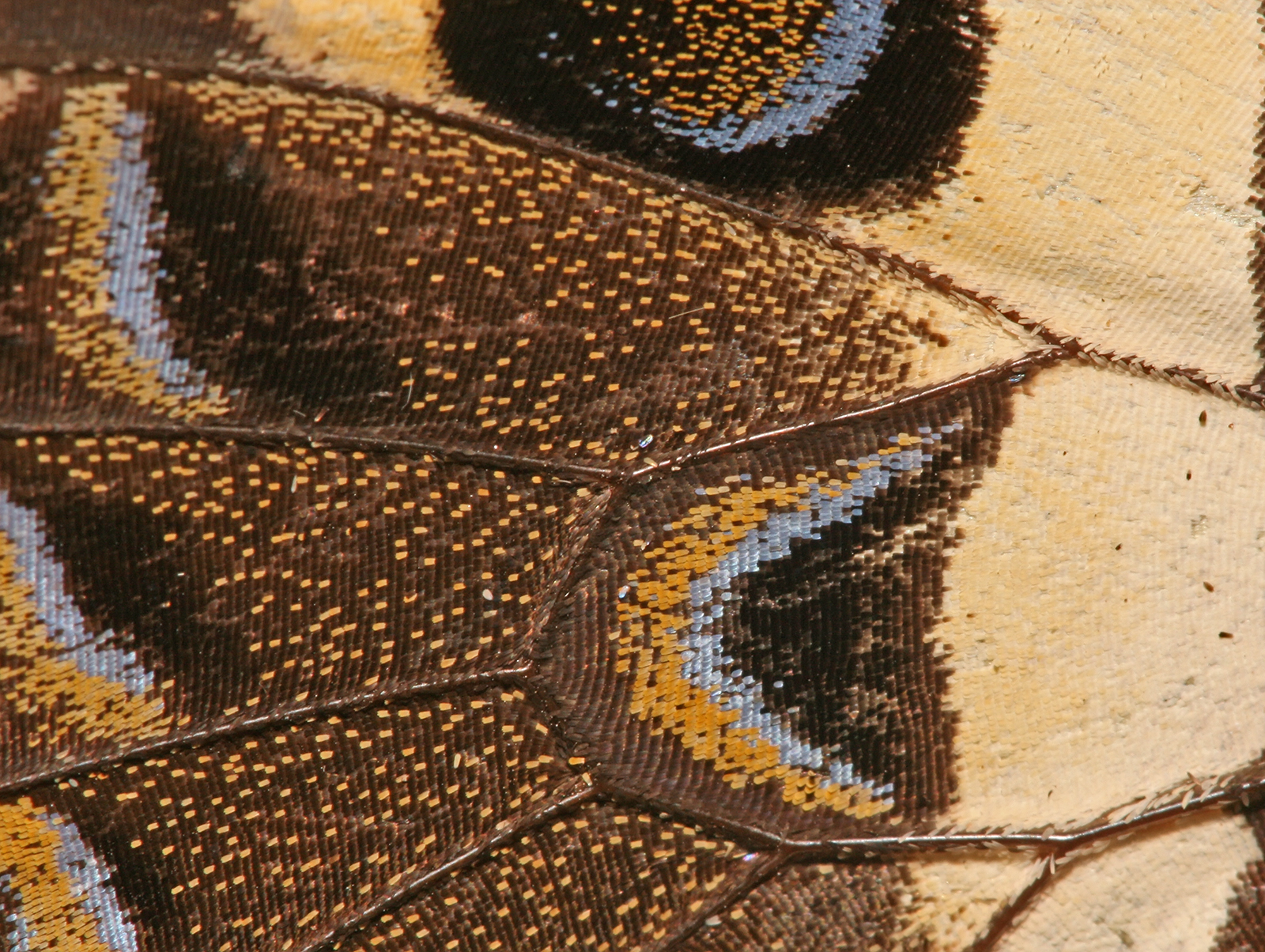 |
| Display cases featured exquisite specimens (dead, sadly, but beautiful) |
 |
| From Wikimedia Commons |
Just a reminder not to remove the butterflies from feeders, brought to you by this Owl butterfly.
This specimen (a moth, I think) is being held by one of the museum staff, who said it might be dehydrated.
This is a moth, not a butterfly, but what beautiful colors!
 |
| Snake's Head Moth |
The veining of the wings is clearly visible in this shot:
After lunch and a tour of the African Peoples and the Human Origins exhibits (more about that in another post), we went into the Rose Center for Earth and Space where we explored the development of the universe from the Big Bang:
and cruised past some planets, including Jupiter:
Q explained how stars develop over time and where black holes come from (more thoroughly than the museum film did -- I learned a lot). We wandered through the Hall of Planet Earth, which included the Willamette meteorite from Oregon, named Tomanowos by the Clackamas Indians (who are part of the Confederated Tribes of the Grand Ronde today).
The museum text stated that:
According to the traditions of the Clackamas, Tomanowos is a revered spiritual being that has healed and empowered the people of the valley since the beginning of time. The Clackamas believe that Tomanowos came to the valley as a representative of the Sky People and that a union occurred between the sky, earth and water when it rested on the ground and collected rainwater in its basins. The rainwater served as a powerful purifying, cleansing and healing source for the Clackamas and their neighbors.Side note: Having spent this semester learning about museum exhibits had made me much more aware of museum design choices. This is a good example of how relevant contextual information made me much more interested in the exhibit item. I was first struck by the sheer size of the meteorite, but reading about its meaning to the Clackamas made it much more interesting to me.
After the museum, we took a walk through a soggy Central Park and found the lovely Swedish cottage with the Shakespeare Garden behind it.
Is it just me, or are these flowers giving us the finger? That's NYC tulips for you . . .
From the heavens to the earth, we saw it all. Many thanks to Q's mom for such a full and enjoyable day.


















What wonderful exhibits! Thank you for posting those fabulous photos, especially the butterflies and moths!
ReplyDeleteThanks for your comment, Kathryn! I'm glad you liked the photos.
ReplyDelete